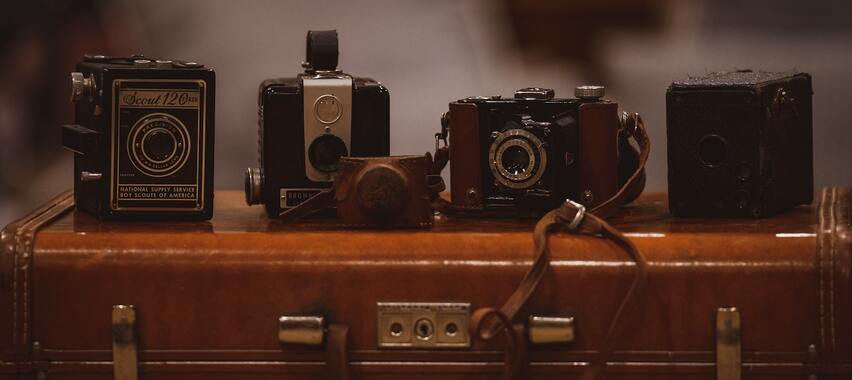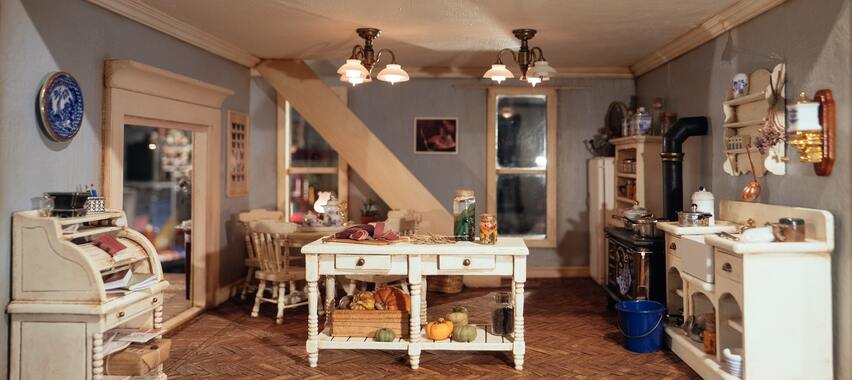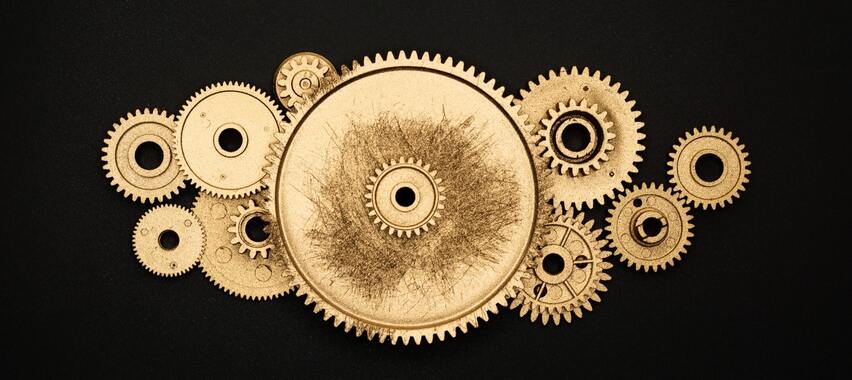Unusual things to do in Warsaw
Created:

Warsaw is a city with a rich cultural heritage and a range of unique and fascinating attractions to explore. From the historical landmarks and museums that showcase the city's past to the modern and innovative architecture and art installations that reflect its present, Warsaw has something for everyone. Tourists can enjoy exploring the city's many museums, such as the "Neon Museum", the "Museum of Dollhouses, Games and Toys", and the "Gasworks Museum", as well as discovering the city's iconic landmarks like the "Warsaw Basilisk" and "Keret House". Whether you're interested in history, art, culture, or architecture, Warsaw is a city that offers endless possibilities for exploration and discovery.
Warsaw Fotoplastikon

It is a historic stereoscopic viewer that was built in 1905 and is one of the few remaining of its kind in the world. The Fotoplastikon consists of a large round wooden chamber that seats around 60 people and features a circular platform in the center.
The attraction offers visitors an opportunity to take a virtual journey back in time and explore various parts of Poland and the world through a series of antique photographs. The photographs are displayed on two large screens that are viewed through the stereoscopic lenses, creating a three-dimensional effect. The images range from historical landmarks and natural landscapes to cultural events and everyday life.
Aside from the historical photographs, the Warsaw Fotoplastikon also offers a modern exhibit showcasing the latest advancements in photography and cinematography. The exhibit features interactive displays, digital cameras, and 3D printing technology, providing visitors with an immersive experience that showcases the evolution of photography over time.
Overall, the Warsaw Fotoplastikon is a must-visit attraction for anyone interested in history, culture, and technology. It is a unique opportunity to step back in time and experience the world as it was captured through the lenses of the past.
Keret House
The house is only 92 centimeters at its narrowest point, making it the world's narrowest house. Despite its diminutive size, Keret House is a fully functional living space, complete with a kitchen, bathroom, and bedroom.
The house was designed by architect Jakub Szczesny as a tribute to Israeli writer and filmmaker Etgar Keret, and as a unique response to the lack of space in modern cities. The interior of the house is a creative and compact space, filled with ingenious design solutions and multi-functional furniture. The walls are covered in colorful geometric patterns, and the space is filled with natural light.
Visitors to Keret House can take a guided tour of the interior and learn about the inspiration behind its design. The tour is a fascinating glimpse into the world of micro-housing and the ways in which architects are adapting to the challenges of urban living. Visitors can also learn about the life and work of Etgar Keret, who has described the house as a place "where stories can be born."
Keret House is located in the hip and trendy neighborhood of Wola, surrounded by vibrant street art, cafes, and galleries. It is a unique and memorable attraction that offers a glimpse into the creative spirit of Warsaw and the possibilities of tiny living.
The Museum of Dollhouses, Games and Toys

As its name suggests, the museum features an extensive collection of miniature dollhouses, as well as a wide variety of vintage games and toys from different eras.
Visitors to the museum can explore the meticulously crafted dollhouses, which range from classic Victorian mansions to modern apartments. Each dollhouse is fully furnished and decorated with intricate details, offering a glimpse into the lifestyles of different eras and social classes. The museum also features a variety of other miniature items, including tiny books, musical instruments, and household objects.
In addition to the dollhouses, the museum offers a diverse collection of vintage games and toys, from classic board games to wooden trains and cars. Visitors can try their hand at traditional Polish games, or admire the intricate craftsmanship of antique dolls and teddy bears.
The museum is also home to a range of interactive exhibits, including a miniature train that visitors can control and a room filled with life-sized toys that encourage active play and exploration. Children will especially enjoy the museum's play areas, where they can build their own structures and create their own worlds using the museum's collection of building blocks and toys.
Overall, the "Museum of Dollhouses, Games, and Toys" is a delightful and enchanting attraction that offers a unique perspective on the history of play and childhood. It is a must-visit destination for families with young children, as well as anyone interested in the art and craft of miniature models and toys.
The Warsaw Basilisk
The Basilisk is a legendary creature, a mythical serpent with the power to turn anyone who looks into its eyes to stone. According to legend, the Basilisk has been responsible for countless deaths and destruction throughout history.
Despite its fearsome reputation, the Warsaw Basilisk is also a beloved symbol of the city, and has been featured in countless works of art and literature. The Basilisk is depicted as a winged serpent with a crown on its head, and is said to reside in a secret underground lair beneath the city.
Visitors to Warsaw can explore the legends and mythology surrounding the Basilisk at the Warsaw Basilisk Museum. The museum offers a fascinating glimpse into the history and folklore of this mythical creature, including interactive exhibits and displays that bring the legend to life.
Visitors can also take a guided tour of the city to discover the many places where the Basilisk has left its mark, from the sculptures and monuments that dot the cityscape to the hidden symbols and images that can be found in the architecture and design of Warsaw's buildings.
Overall, the Warsaw Basilisk is a unique and intriguing attraction that offers visitors a glimpse into the rich history and culture of Poland. It is a must-visit destination for anyone interested in mythology, folklore, or the mysterious and magical aspects of the human imagination.
Warsaw Gasworks Museum

The museum is housed in a beautifully restored industrial complex that dates back to the late 19th century, and offers visitors a glimpse into the history and technology of gas production in Poland.
Visitors to the museum can explore the impressive machinery and equipment used in the gas production process, including the massive gasometers that once stored the city's supply of natural gas. The museum also features interactive exhibits and displays that showcase the history and evolution of gas production, as well as the impact of gas on the city's development and growth.
One of the highlights of the museum is a guided tour of the gasworks, which takes visitors through the maze of pipes, valves, and tanks that make up the complex. Visitors can learn about the various stages of the gas production process, from the refinement of natural gas to the distribution of gas to homes and businesses throughout the city.
The museum also features a range of exhibits and displays that showcase the cultural and social history of the gasworks and its impact on the city. Visitors can learn about the lives of the workers who once operated the gasworks, as well as the role of gas in shaping the city's architecture, infrastructure, and economy.
Overall, the Warsaw Gasworks Museum is a must-visit destination for anyone interested in the history and technology of gas production, as well as the cultural and social impact of this vital resource. It is a fascinating and immersive attraction that offers a unique perspective on the industrial heritage of Warsaw and the role of gas in shaping the modern city.
The Neon Museum

The Neon Museum in Warsaw is a fascinating attraction for anyone interested in art, history, and design. It is located in the heart of the city and is dedicated to preserving the vibrant and colorful neon signs that once adorned the streets of Warsaw during the 20th century.
The museum boasts a collection of over 100 neon signs that have been carefully restored and displayed for visitors to enjoy. Each sign tells a story of a bygone era, from the communist period to the post-war years of rebuilding and growth. The neon signs were once a symbol of progress and modernity in Poland, and today they offer a glimpse into the country's past and its cultural heritage.
Visitors to the Neon Museum in Warsaw can take a guided tour and learn about the history and significance of each sign, as well as the technology and craftsmanship that went into creating them. The museum also offers a unique opportunity to see the signs come to life at night, as they are illuminated in all their glory.
In addition to the neon signs, the museum features exhibits on the art and design of the period, as well as interactive displays that allow visitors to create their own neon signs. The museum also hosts workshops and events throughout the year, making it a dynamic and engaging attraction for visitors of all ages.
Overall, the Neon Museum in Warsaw is a must-visit attraction for anyone interested in the history and culture of Poland, as well as the art and design of the 20th century. It offers a unique and colorful perspective on the city's past and is sure to leave a lasting impression on all who visit.